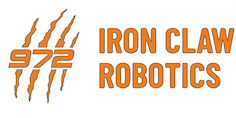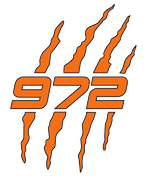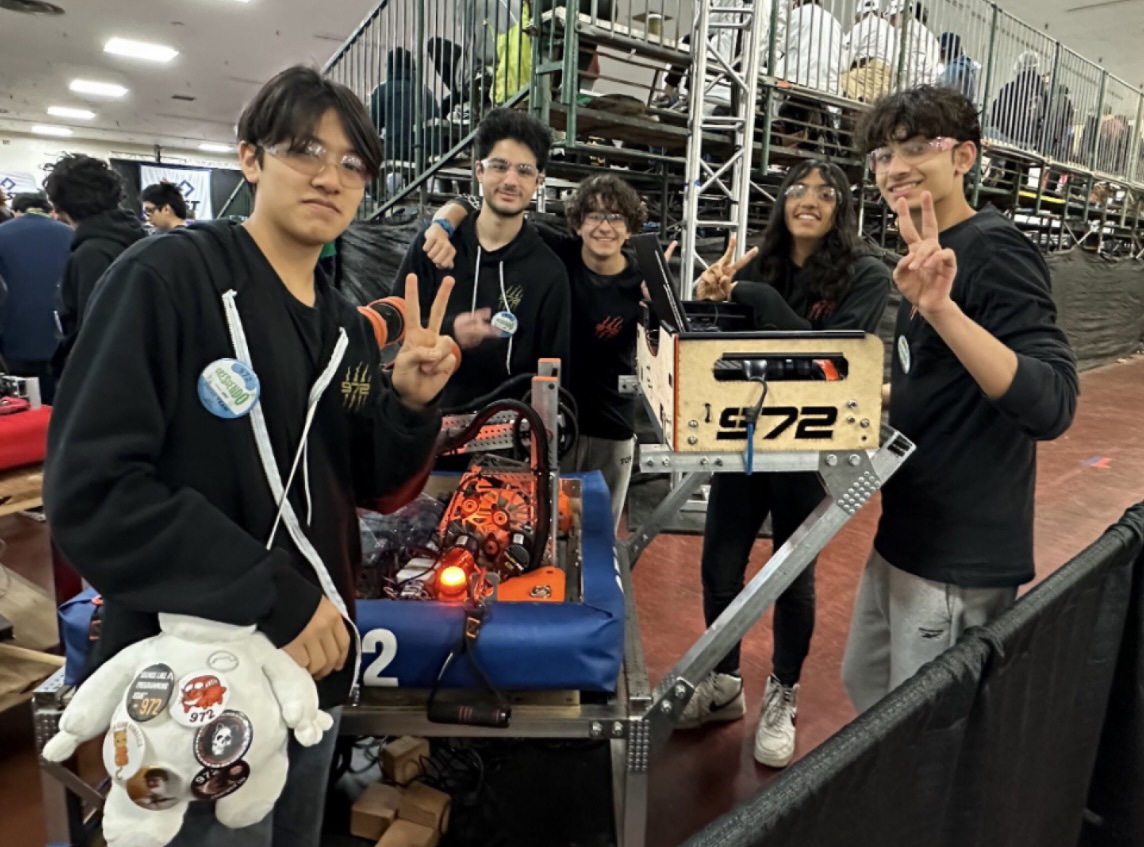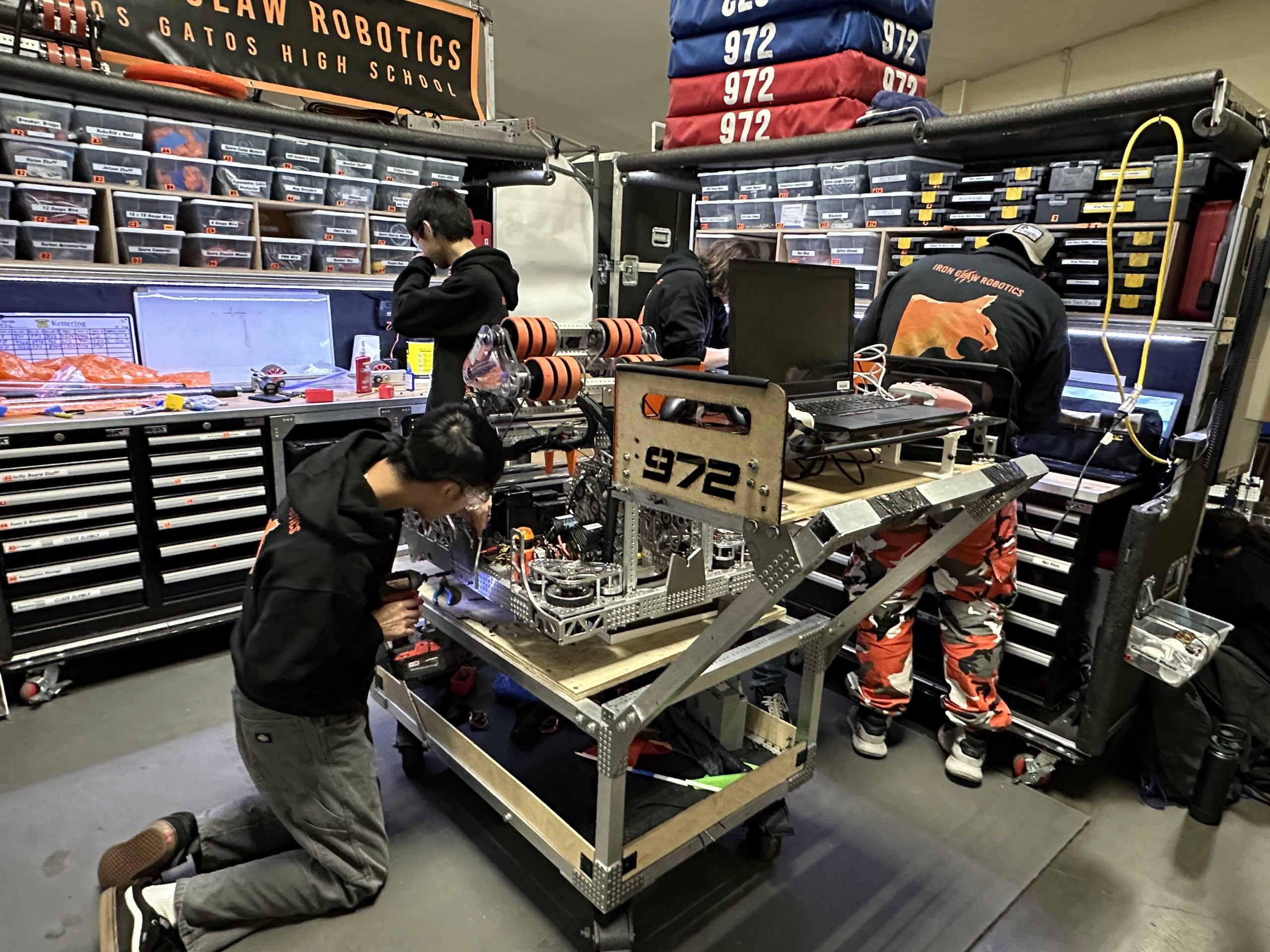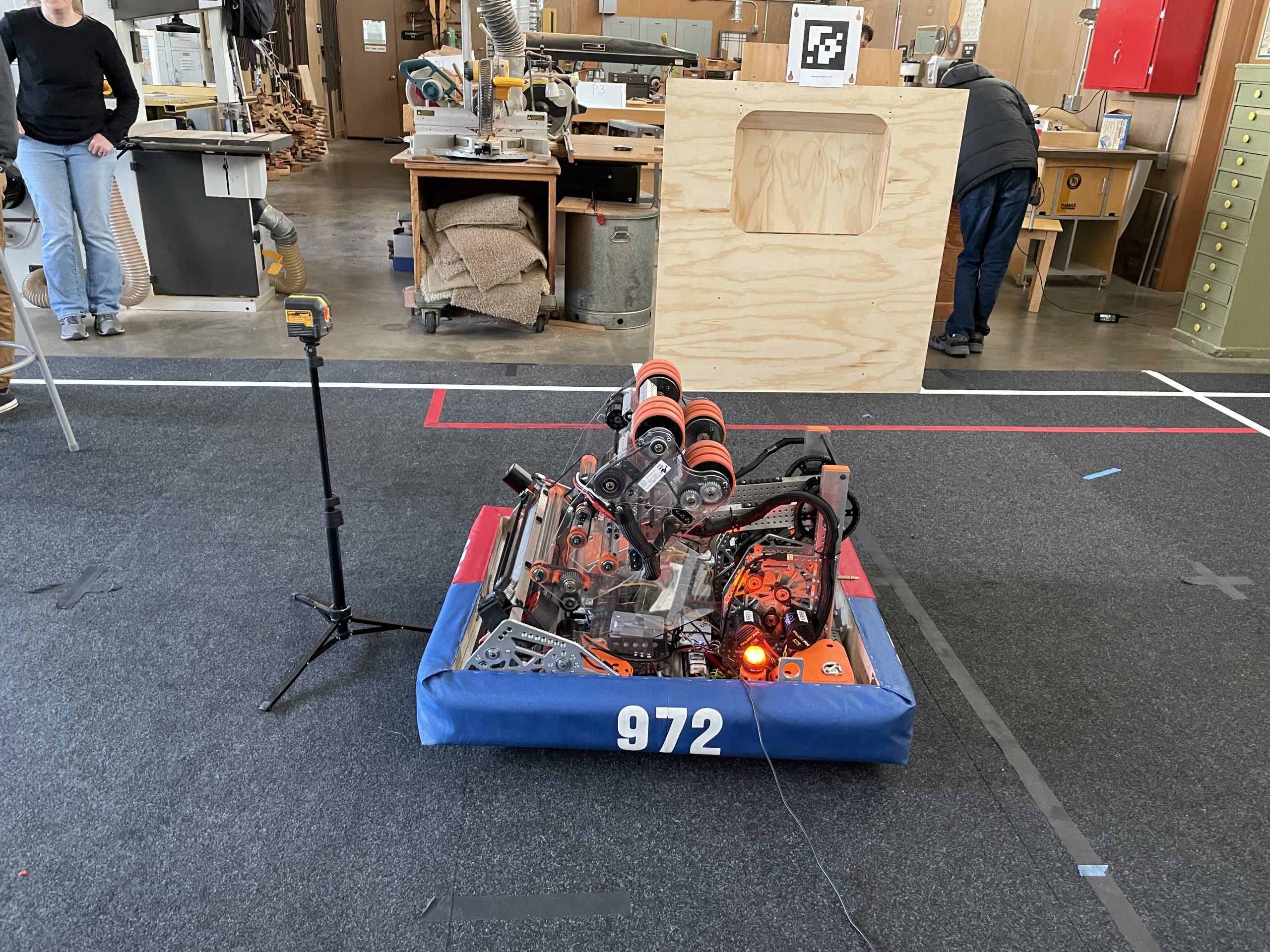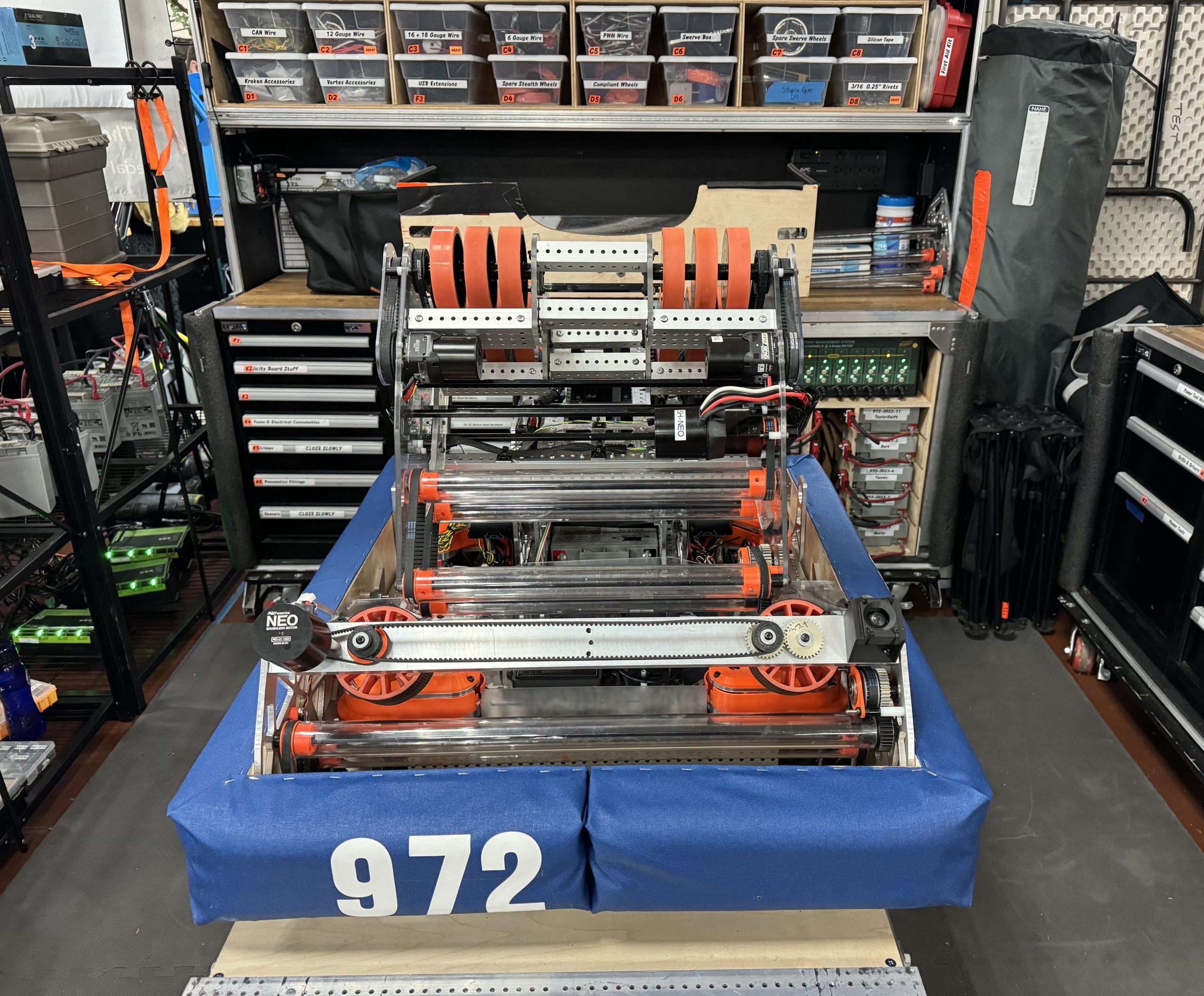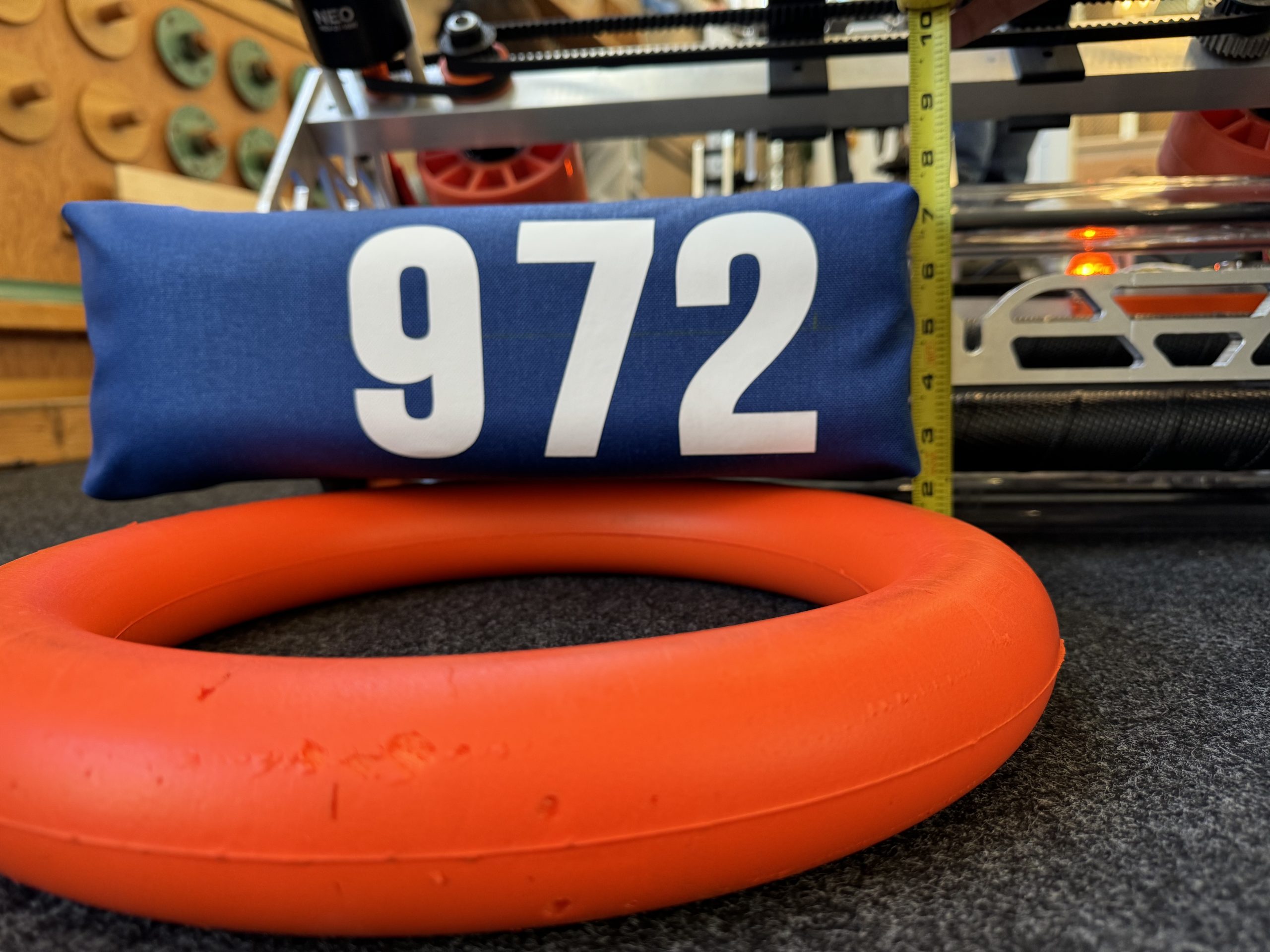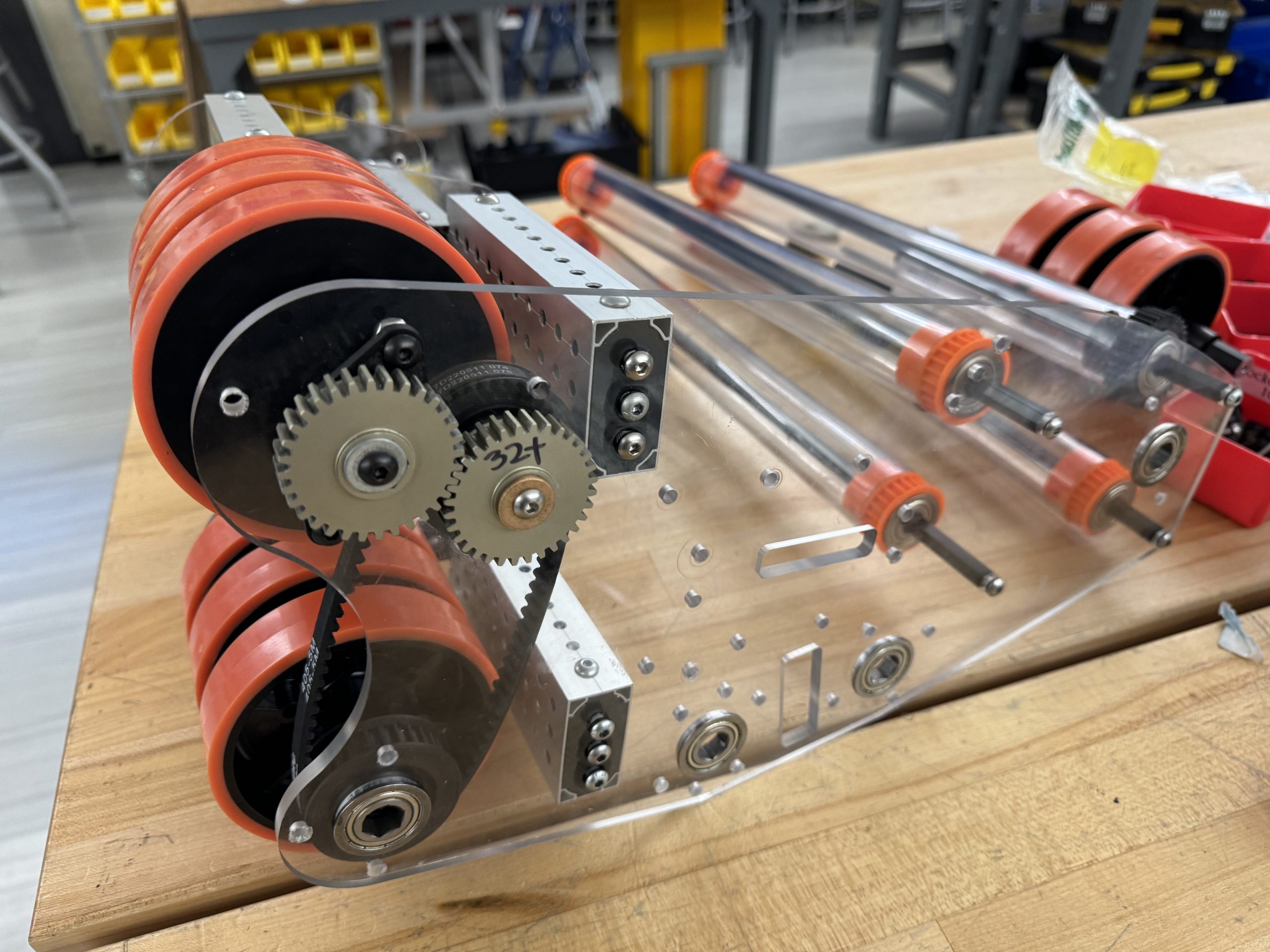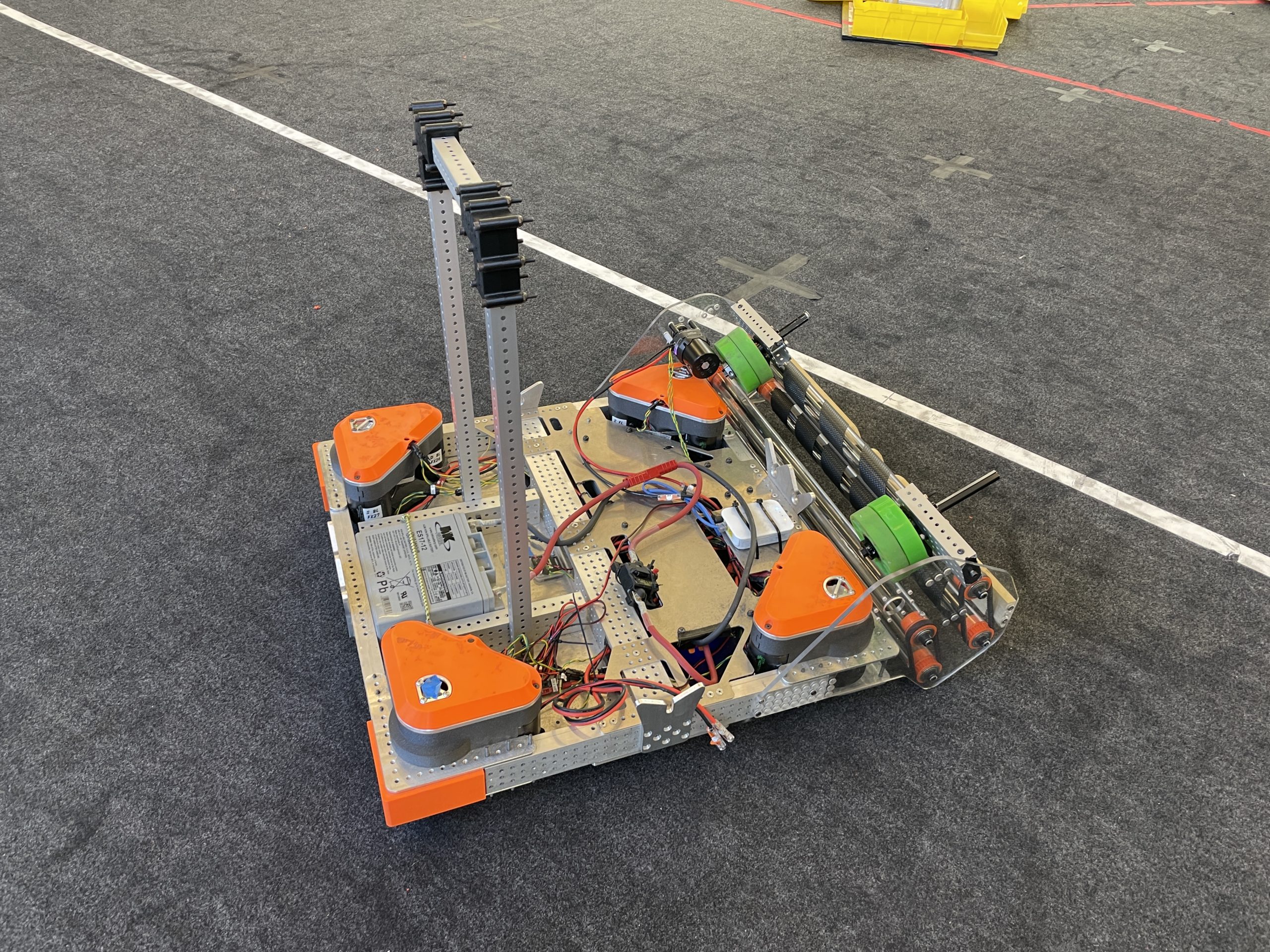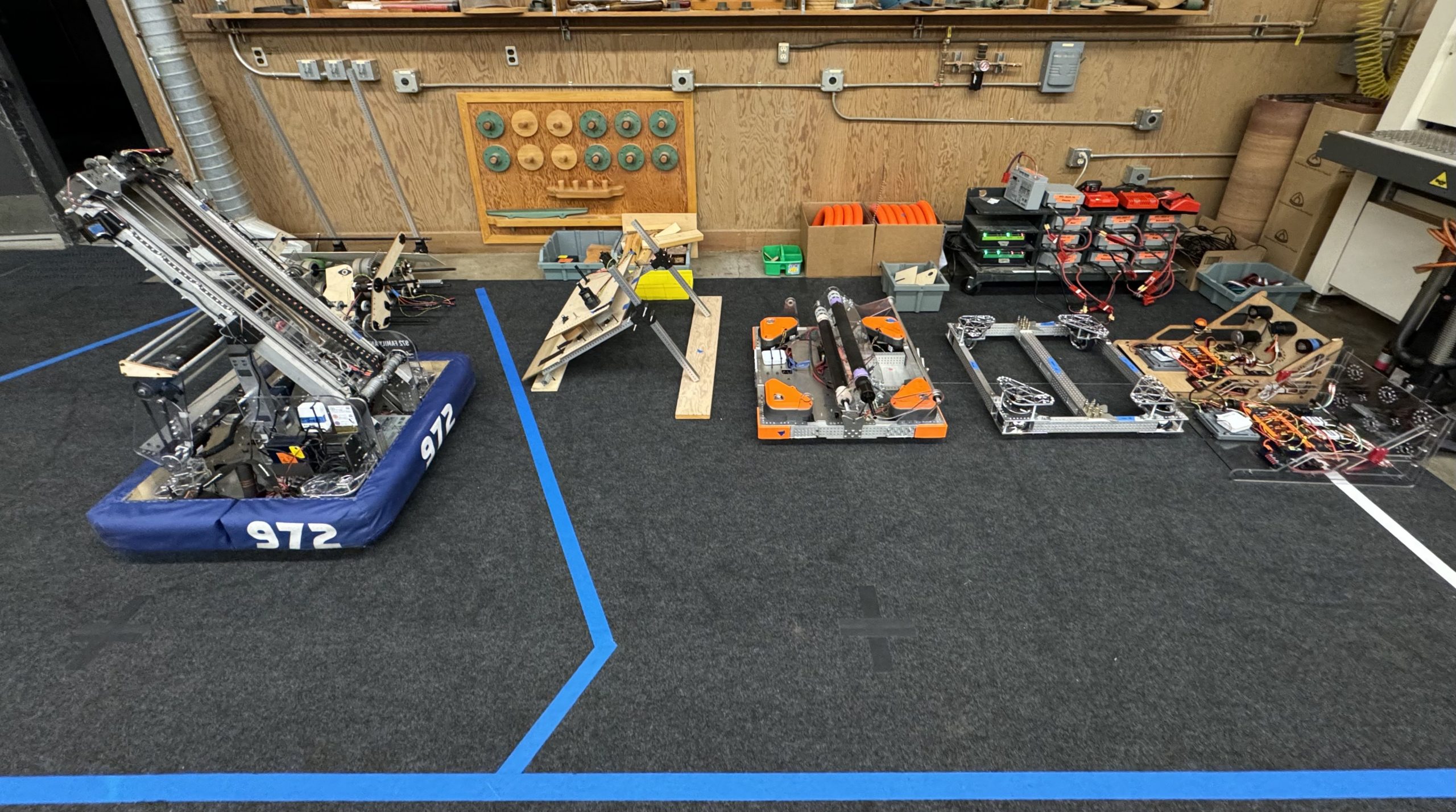2024 East Bay Regional
Our team competed at East Bay Regional, a week six comp with 12 pre-qualified teams, including 254 Cheesy Poofs, 1678 Citrus Circuits, 5940 BREAD, 581 Blazing Bulldogs, 114 Eaglestrike, and more. In the days before, the team worked hard to maximize every ounce of ability our robot offered. After swapping the intake and several other hardware revisions, our software team was hard at work perfecting distance shooting. The Monday before competition, our robot, Vivace, shot consistently from the podium, scoring fifty times in a row. We then tuned our auto routines, focusing on our 5-piece and 3-piece routines. After running through them consistently, the team packed up and was ready to go. During Friday’s practice sessions, we achieved many successful runs of our 5-piece, and used the 3-piece consistently-save for a mishap with placement. We maximized the potential of our drivetrain by increasing the current draw, which dramatically increased our speed. Shooting from distance worked well. Although one of the intake rollers broke, and a polycarb side piece cracked on the shooter, our pit crew swapped them out efficiently. By the end of the day, we were ready for qualification matches. On Saturday, we truly saw our hard work paying off, doing extremely well in qualifications. The only major issues we encountered were with the autonomous routines. The [...]
